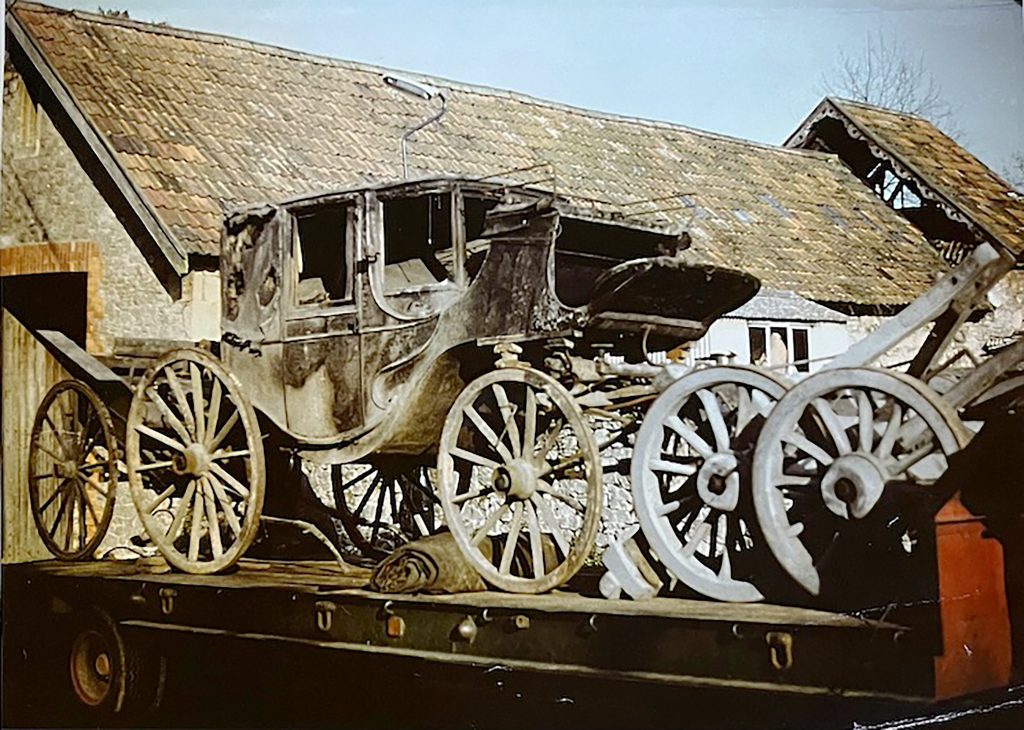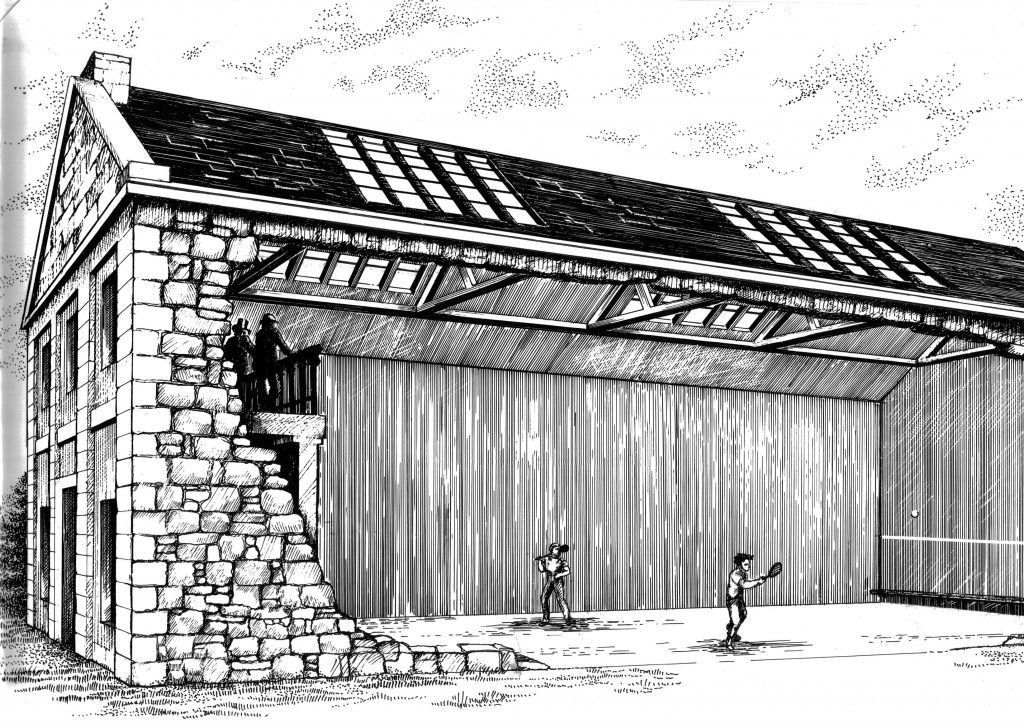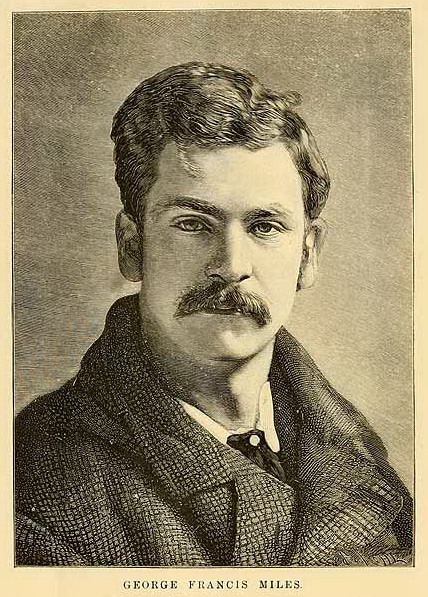One building on the Kings Weston estate has had little attention focussed upon it over the years, but this article hopes to rectify that. Fives Court is now the home belonging to some of our volunteers who have kindly provided us with some photographs. It’s located on Kings Weston Lane, just at the junction of Napier Miles Road, and almost opposite the back entrance to the mansion. It presently sports a façade to the street inspired by the lodge opposite, but this obscures more work-a-day origins.
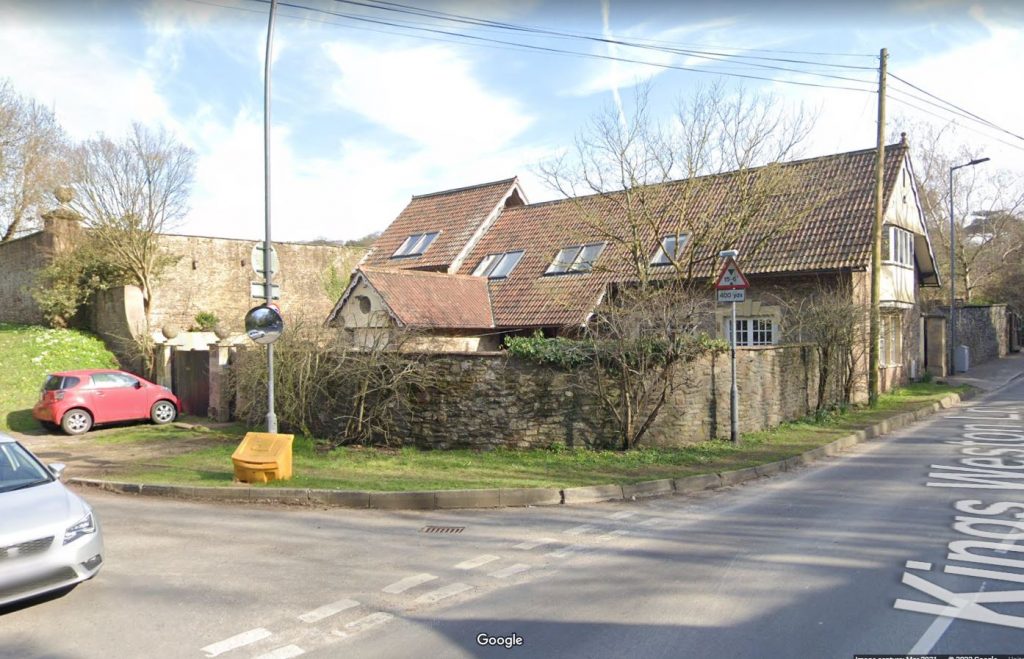
Our first knowledge of it comes from one of two plans produced in 1772 by Isaac Taylor. The plans were drawn up after the laying out of a complex of walled gardens to the east and a long building matching the present Fives Court is included. It’s odd that it only appears on one of the two sheets covering this part of the estate and that it’s not shown coloured as the other buildings around it are, so perhaps this marks the construction date?
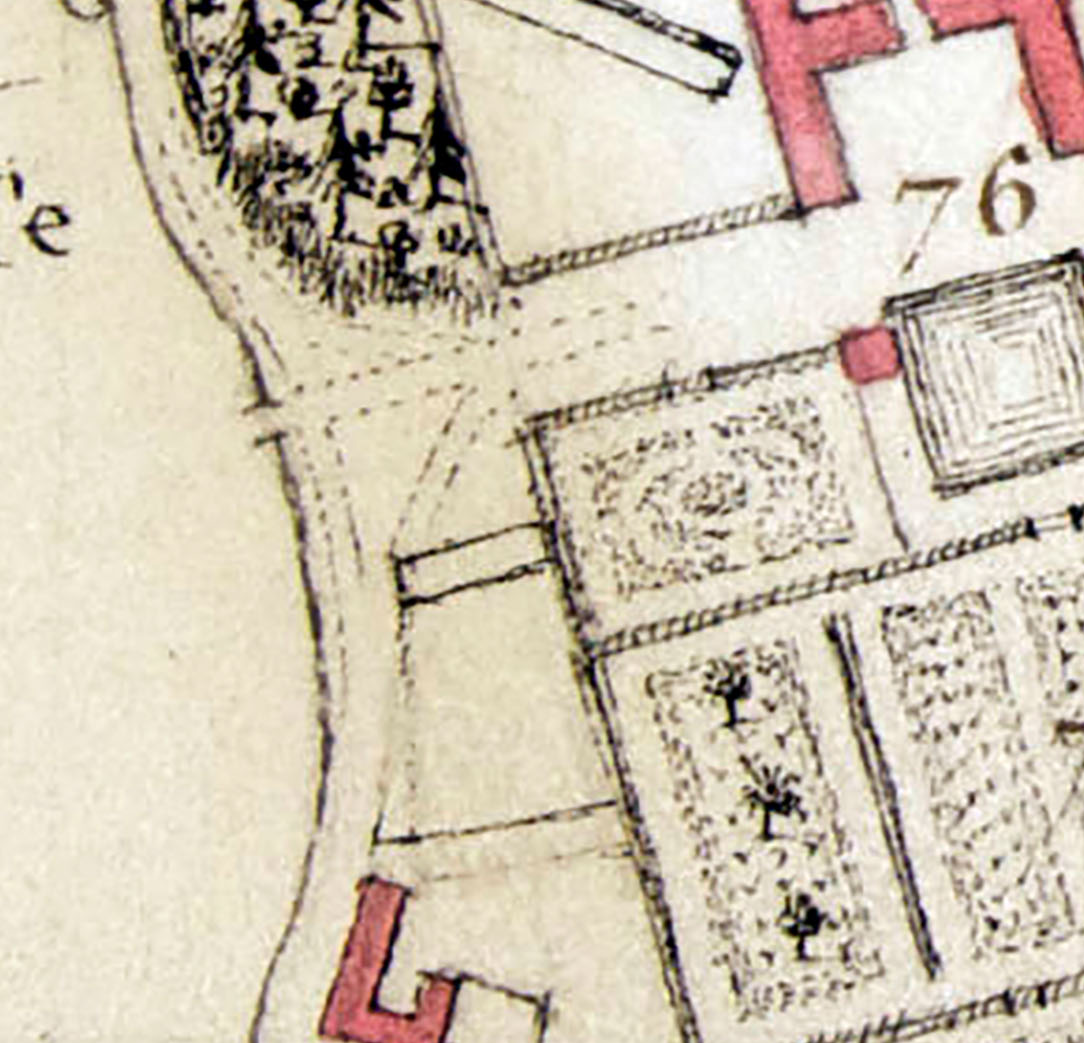
By 1849 it’s described as a Wood House, with a walled wood yard immediately to the south, and an open grass area occupying the corner of the road. It’s depicted as having a symmetrical plan with doors centrally positioned on the north and south sides, so very different from the rambling and picturesque outline of today’s house.
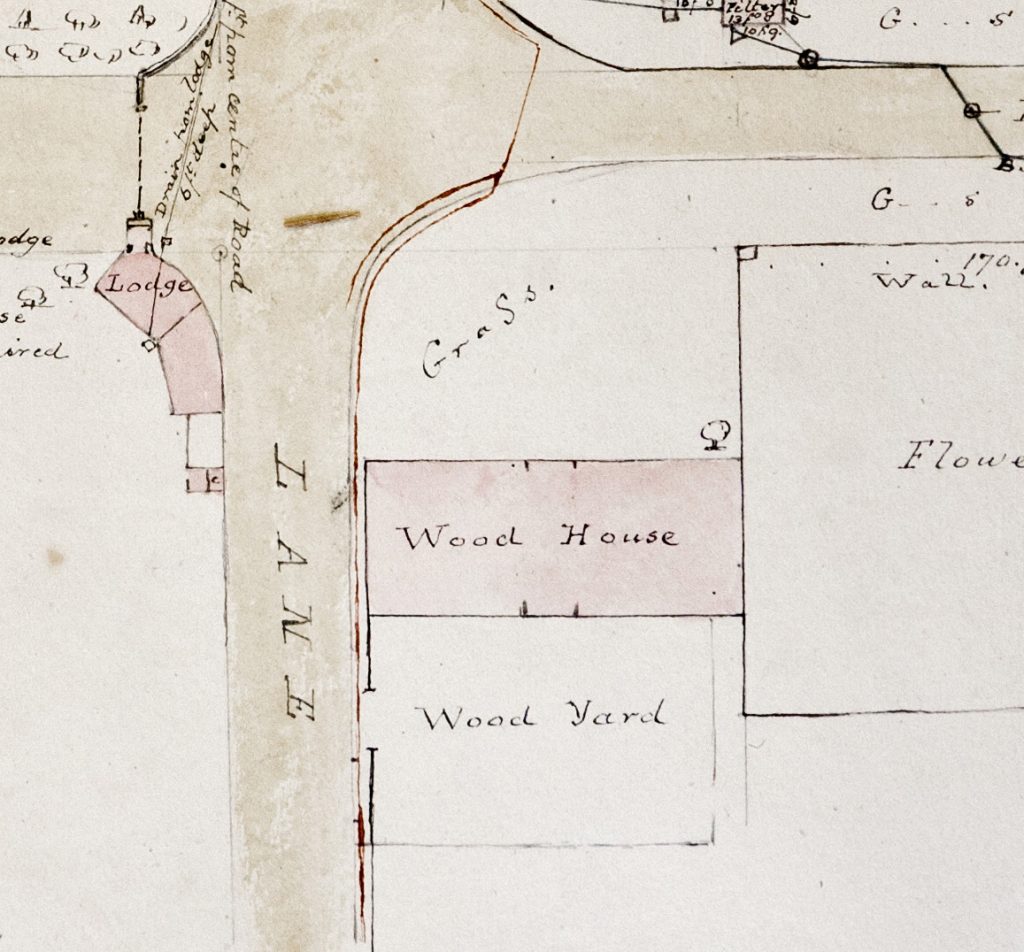
Its use as a woodshed seems to have been short-lived, and the modern name, Fives Court, is an insight to the building’s later Victorian History. Fives is a traditional game played like badminton, against a blank wall, but using the hand rather than a racket. It’s still a game associated with and played in public schools, with Clifton College still retaining a court in their Victorian buildings. The first mention of the building in use as a sports hall of sorts is in 1886 when one of the regular Shirehampton horticultural shows was held in the park and the following description was published in the Bristol Mercury:
“In the racquet court stalls were arranged and were laden with many beautiful objects of art, and at one end of the court was a collection of paintings, the work of the late Mrs R. Miles and Mr Frank Miles.”
Indeed, by this point the shed appears to have been converted as a court for the game of racquets, similar but not identical for Fives. It may have been for the young Philip Napier Miles that the conversion was undertaken. Born in 1865, his time in public school may have seen him bring the sport home and the building refurbished to cater for a new passion. The original shed needed some work to accommodate the new use. Strictly speaking a Racquet court should be 30-by-60-foot, and the present building falls short of that a little. A more critical dimension was the playing wall, which also needed to be at least 30ft high. It appears that the original roof was too low to accommodate a court, and to get over this the east side was removed and reconstructed at a higher level, creating the pronounced step up in the roofline that remains obvious today. The twin doors would have had to be infilled to create a flush finish to the interior of the court, and new glazing was introduced into the raised gable end that now overlooked the walled garden.
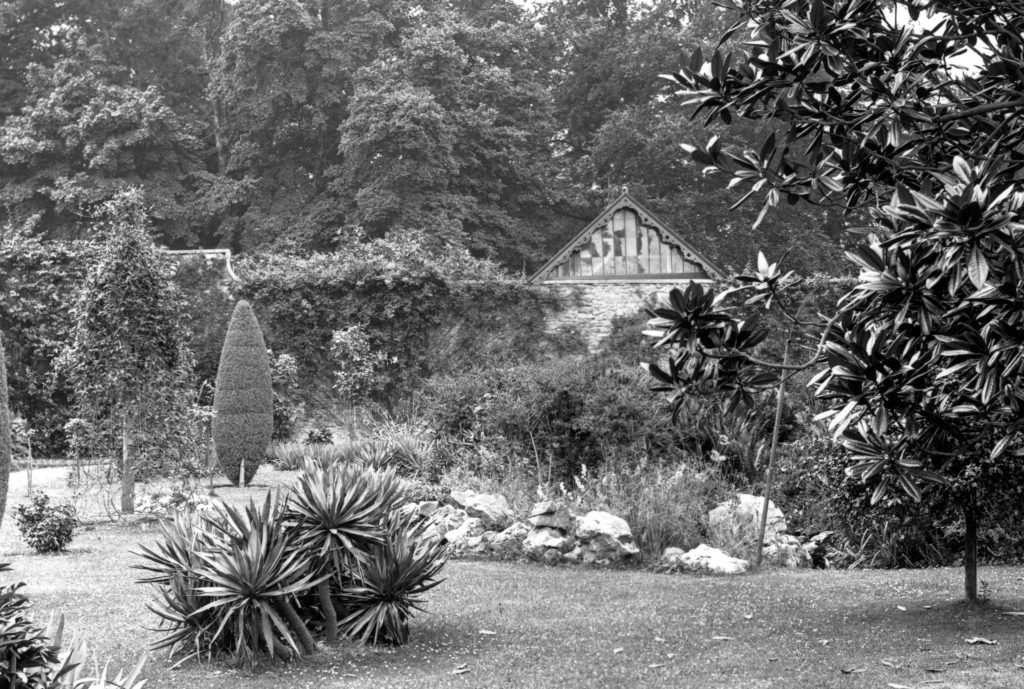
Diverging a little, one of the artists mentioned as exhibiting in the 1886 Horticultural show was a family member, Napier Miles’s cousin, Frank Miles. He was far from being a humble amateur, with a reputation as one of the leading society portraitists of his day. Between 1875 and 1881 he maintained a close relationship with Oscar Wilde, living together in a house in Tite Street in London, before Frank’s father threatened to cut his son off if he didn’t cut his ties with Wilde. The year of the racquet court exhibition was the same as his engagement to a miss Lucy Huges was announced, and he was at the height of his fame. How strange then that his works should appear in such modest circumstances at Kings Weston! Frank’s story took a dark turn the following year, with the engagement called off and his entry into the Brislington mental asylum after a breakdown. He died there four years later from “exhaustion and pneumonia”. Napier Miles did not attend the funeral, a private affair only for Franks three brothers. Frank must have visited Kings Weston, his father’s former family home, and it’s interesting to speculate whether Oscar Wilde ever accompanied him there.
The court continued to provide occasional use for fetes and bazaars held at the house into the 20th Century. In 1916 it was again the venue for artworks sold in aid of the Kingsweston Auxiliary Hospital as part of a grand Military Tournament held in the grounds. It may be that the building was converted for garage use for the Miles family at about this time with the addition of a big vehicle doorway directly onto Kings Weston Road, but documentary evidence is slim for this period.
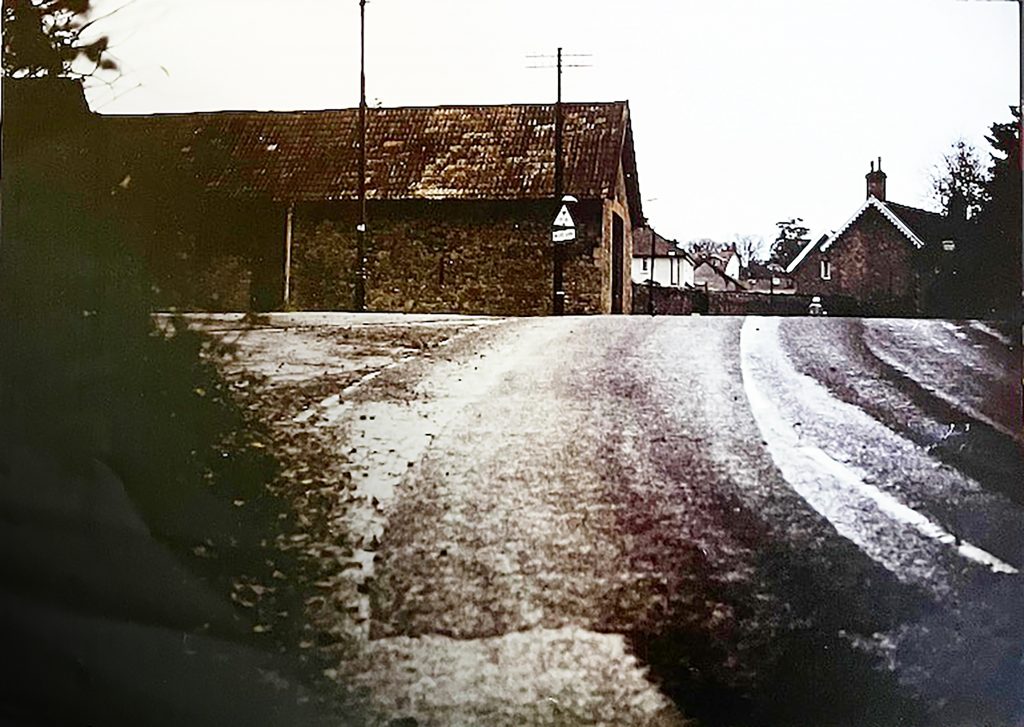
The racquet court was briefly requisitioned at the start of WWII, before being declared surplus and returned to the estate. It spent much of the war as the temporary home of some historic carriages that had been bombed out of their home in Bristol Museum. There are still locals to the area who remember seeing these through the doors of the building. One of the photographs shown to us by the Reid family shows the removal of some of these carriages in the 1980s, the building appearing in its earlier state before final conversion into a family home after 1985.
